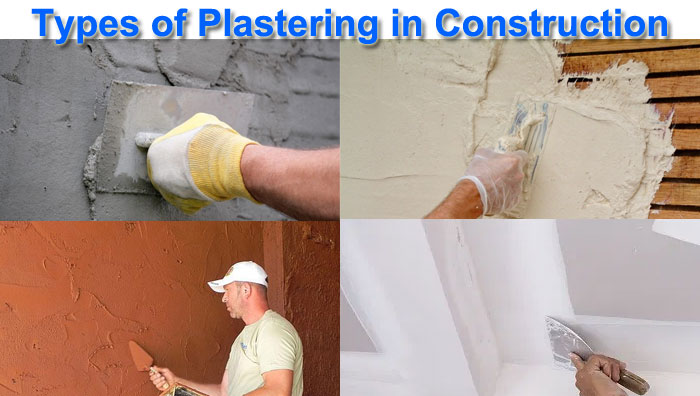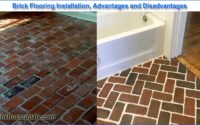Types of Plastering | What is Mud, Cement, Lime, and Water Proof Plaster
What is Plaster?
Plaster is the technique of using a plastic material called plaster or mortar to cover rough walls, uneven surfaces, and other structures in the construction industry. This article will guide you on types of plastering.
When plaster or cement is put to the external surface of a wall, either to improve the appearance or to protect it from weather agents such as rain, heat and so on, the term ‘rendering’ is sometimes used instead of plastering.
The Need for a Good Plaster
The plastering material must meet the following requirements in order to be considered a good plaster.
It should blend in with the surroundings and remain consistent across all climate fluctuations. It should also be able to use it in all types of weather.
It should not shrink in size as it dries and sets. It will crack otherwise, resulting in an ugly appearance.
It should be low-cost and cost-effective.
It should be tough and long-lasting, with a smooth, non-absorbent, and washable surface that has the desired ornamental impact.
It should provide superb sound insulation as well as high fire resistance.
Following are Four Types of Plastering As Per Material:
Cement Plaster
The cement plaster is made up of one part cement and four parts clean, coarse, and angular river sand. Before adding water, the materials are completely combined in a dry state.
The materials are mixed, or a watertight platform and one cement bag of plaster are made at a time, and the plaster is eaten within 30 minutes of adding water.
Lime Plaster
Lime plaster is a type of sand, water, and lime, usually non-hydraulic hydrated lime (also known as slaked lime, high calcium lime, or air lime). These types of plastering are very strong.
Horsehair was commonly used as reinforcement in ancient lime plasters, as well as pozzolan additions to shorten the working time.
When the plaster is kept moist and access to CO2 from the air is allowed, traditional non-hydraulic hydrated lime only sets by carbonation.
When submerged in water, it will not set. The lime can stay soft for weeks if a thick layer or multiple coats are applied.
Lime plaster can be made to cure faster by utilizing (natural) hydraulic lime or by adding pozzolan additives to make it artificially hydraulic lime.
In ancient times, pozzolanic volcanic ash was used in Roman lime plaster; nowadays, fly ash is favored. By adding gypsum to non-hydraulic lime plaster, it can be made to set faster.
Mud Plaster
Mud plaster is made with equal parts well-tempered clay or brick earth, chopped straw, hay, loose soil, hemp, and cow dung.
All of these ingredients are completely combined and lifted with a big amount of water for around 7 days.
This is thoroughly mixed again until the proper consistency of plaster is achieved; in some cases, mud plaster made of clay and sand is also employed.
Water Proof Plaster
The water-proof plaster is made by mixing 120 N per m3 of sand with one part cement, two parts sand, and crushed alum.
To be used in the water In one lite water, 0.75 N of soft soap is dissolved, and the soap water is then added to the dry mix.






